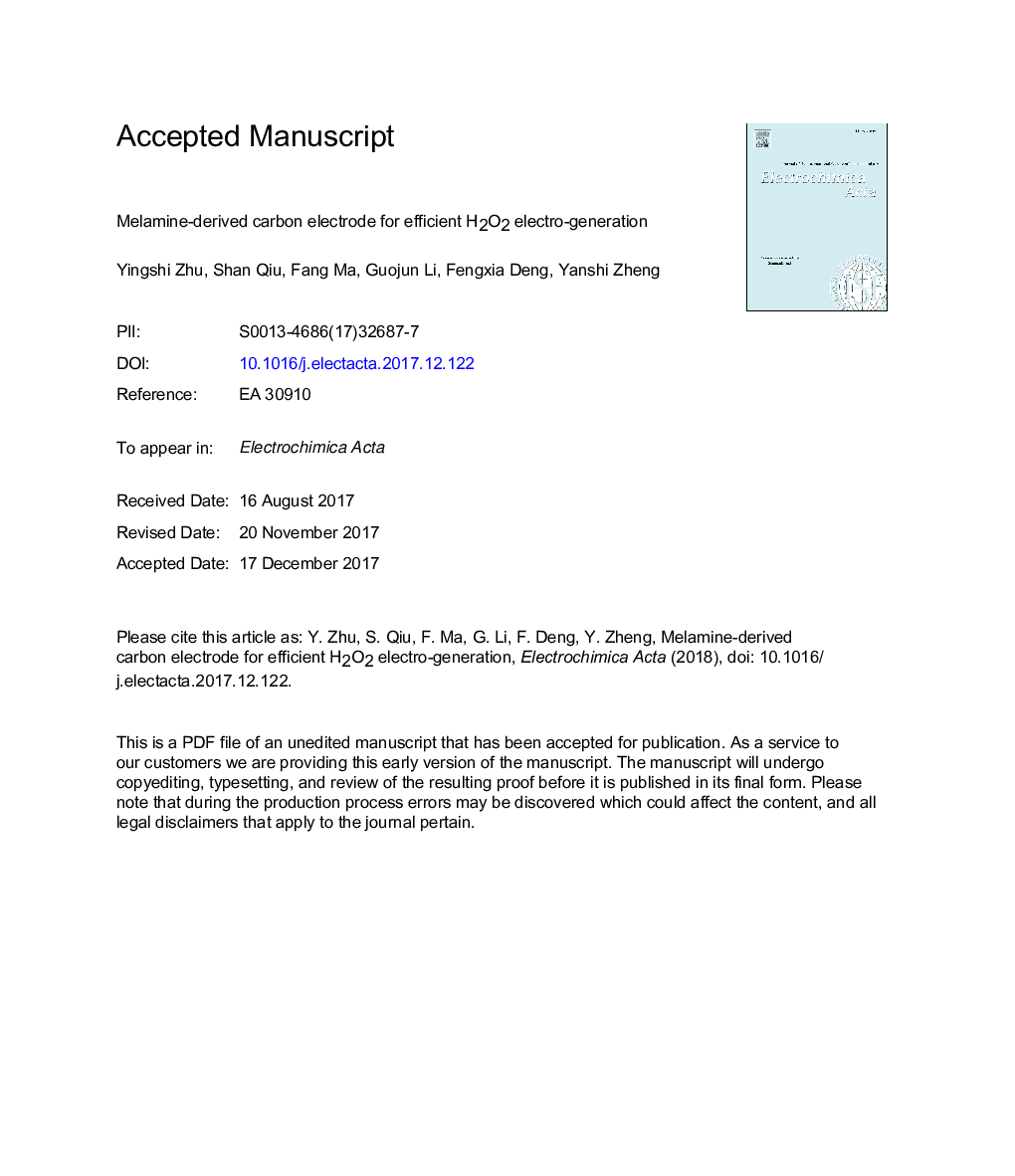| Article ID | Journal | Published Year | Pages | File Type |
|---|---|---|---|---|
| 6604651 | Electrochimica Acta | 2018 | 29 Pages |
Abstract
A facile one-step fabrication of a highly porous nitrogen-enriched graphitic carbon (NGC) cathode derived from melamine was proposed. It was the very first time for the NGC cathode to be used in the electro-Fenton (EF) process for evaluating electro-generated H2O2. The surface characteristics of melamine carbonized at different temperature (NGC-800, NGC-850 and NGC-900) were systematically investigated, including the microstructure, composition, electrochemical properties by the methods of scanning electron microscopy (SEM), X-ray diffraction (XRD), X-ray photoelectron spectroscopy (XPS), Cyclic voltammetry (CV) and Electrochemical impedance spectroscopy (EIS). Results showed that NGC samples carbonized at different temperature were highly porous with a micrometer size of skeletons (1.5-2.2â¯Î¼m). Considering the H2O2 ability, NGC-900 was most efficient cathode in electro-generated H2O2 with a H2O2 concentration of 87.19â¯Î¼mol/L (add H2O2 concentration) among NGC-800, NGC-850 and NGC-900. Moreover, the high efficient H2O2 generation ability kept stable in a wide pH range from 3 to 9. Combined the technologies, including XPS and electrochemical technologies CV, the high efficient H2O2 capacity attributed to the pyrrolic N structure, together with the improved electroconductivity. Therefore, the simple fabrication approach for melamine-derived carbon cathode is a promising low-cost cathode for EF.
Keywords
Related Topics
Physical Sciences and Engineering
Chemical Engineering
Chemical Engineering (General)
Authors
Yingshi Zhu, Shan Qiu, Fang Ma, Guojun Li, Fengxia Deng, Yanshi Zheng,
